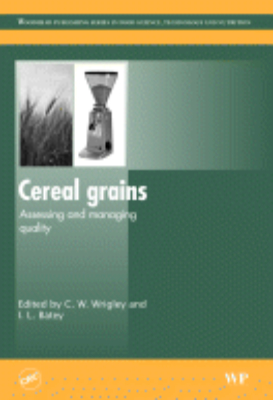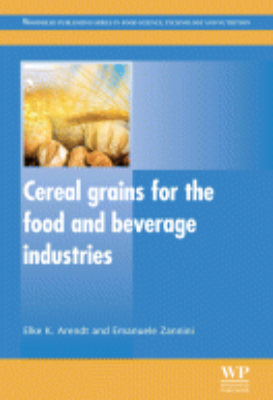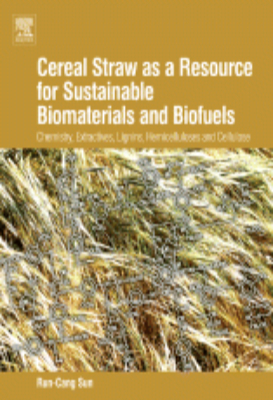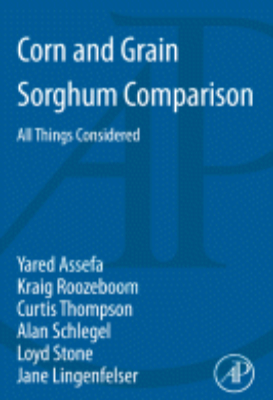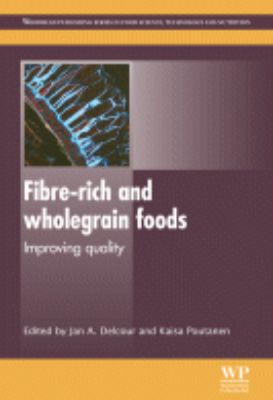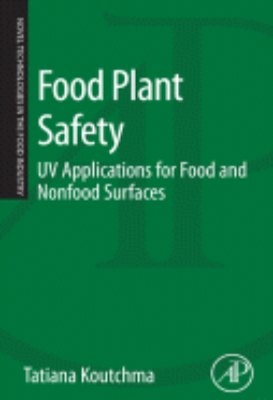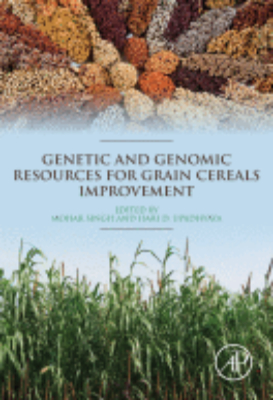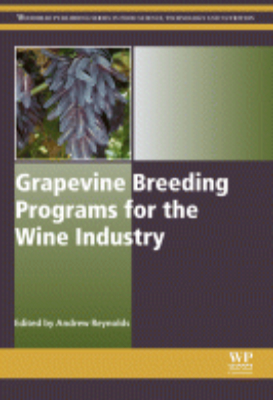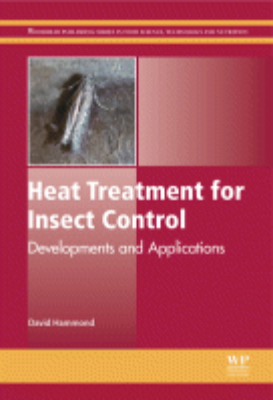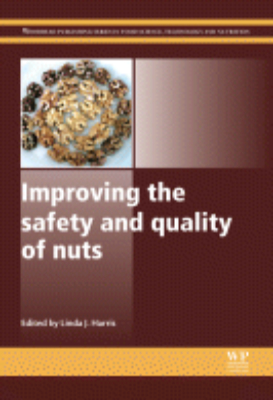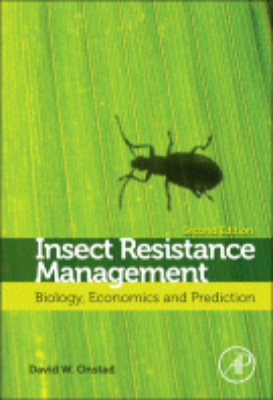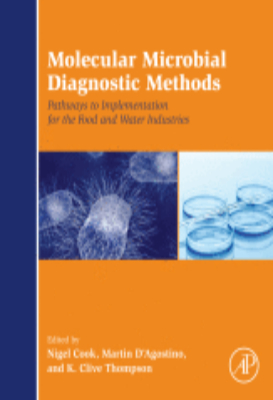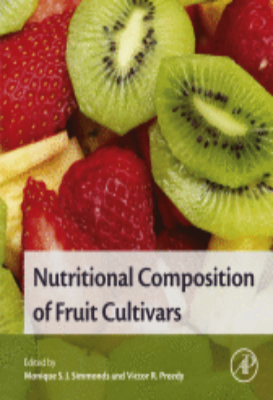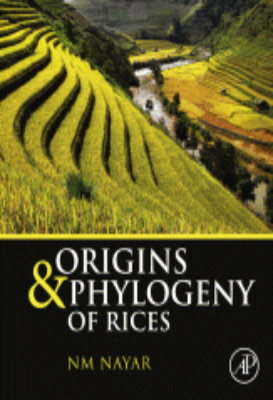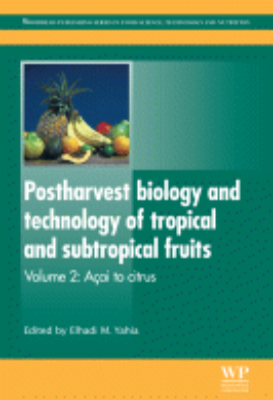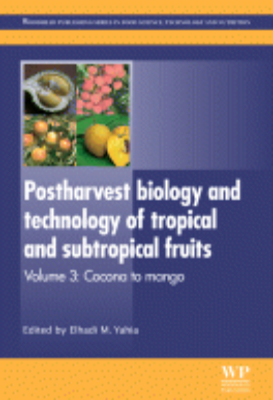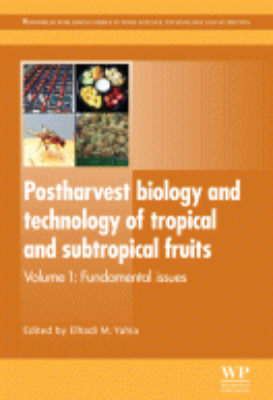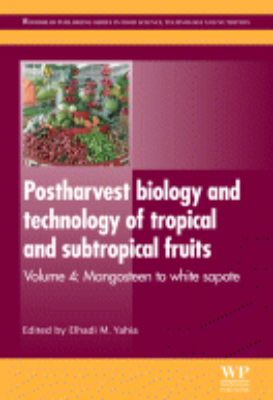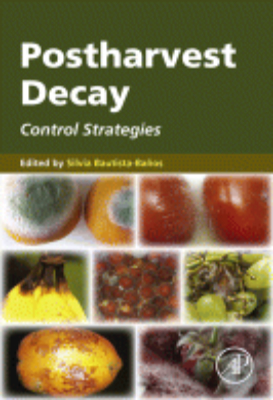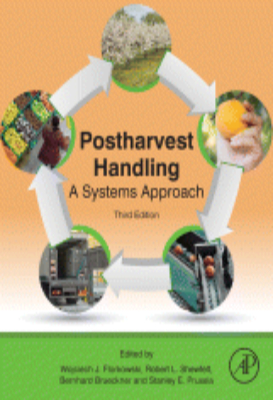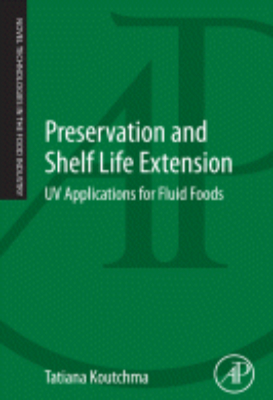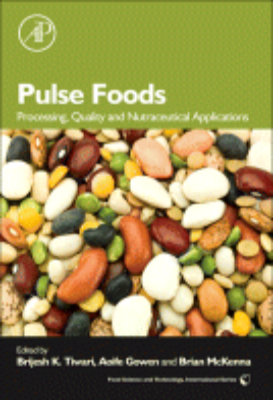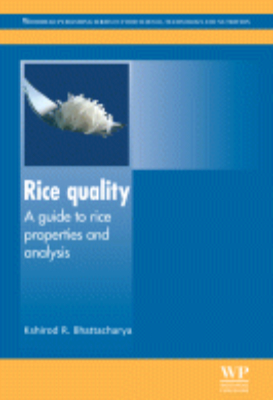E-Resources
A History of Weed Science in the United States
"It is important that scientists think about and know their history - where they came from, what they have accomplished, and how these may affect the future. Weed scientists, similar to scientists in many technological disciplines, have not sought historical reflection. The technological world asks for results and for progress. Achievement is important not, in general, the road that leads to achievement. What was new yesterday is routine today, and what is described as revolutionary today may be considered antiquated tomorrow. Weed science has been strongly influenced by technology developed by supporting industries, subsequently employed in research and, ultimately, used by farmers and crop growers. The science has focused on results and progress. Scientists have been--and the majority remain--problem solvers whose solutions have evolved as rapidly as have the new weed problems needing solutions. In a more formal sense, weed scientists have been adherents of the instrumental ideology of modern science. That is an analysis of their work, and their orientation reveals the strong emphasis on practical, useful knowledge; on know how. The opposite, and frequently complementary orientation, that has been missing from weed science is an emphasis on contemplative knowledge; that is, knowing why. This book expands on and analyzes how these orientations have affected weed sciences development. Key Features. The first analytical history of weed science to be written. Compares the development of weed science, entomology and plant pathology. Identifies the primary founders of weed science and describes their role"
Breeding Oilseed Crops for Sustainable Production
"Breeding Oilseed Crops for Sustainable Production: Opportunities and Constraints presents key insights into accelerating the breeding of sustainable and superior varieties. The book explores the genetic engineering/biotechnology that has played a vital role in transforming economically important traits from distant/wild species to cultivated varieties, enhancing the quality and quantity of oil and seed yield production. Integrated nutrient management, efficient water management, and forecasting models for pests diseases outbreaks and integrated pest and pest management have also added new dimensions in breeding for sustainable production. With the rise in demand, the scientific community has responded positively by directing a greater amount of research towards sustainable production both for edible and industrial uses. Covering the latest information on various major world oil crops including rapeseed mustard, sunflower, groundnut, sesame, oilpalm, cotton, linseed/flax, castor and olive, this book brings the latest advances together in a single volume for researchers and advanced level students. Key Features. Describes various methods and systems to achieve sustainable production in all major oilseed crops. Addresses breeding, biology and utilization aspects simultaneously including those species whose information is not available elsewhere. Includes information on modern biotechnological and molecular techniques and production technologies. Relevant for international government, industrial and academic programs in research and development"
Cereal Grains
"Cereal grains are essential to our dietary needs, as well as for animal feeding and for industrial processing. Consumer needs can only be met by managing quality at all stages of the grain chain. Quality evaluation is also needed at each step for effective management. Cereal grains: assessing and managing quality provides a convenient and comprehensive overview of academic research and industry best practice in these areas. After an initial chapter introducing the themes of the book, further chapters in Part one review cereal grain morphology and composition and the diversity of uses of cereal grains. Chapters in Part two convey the characteristics and quality requirements of particular cereals, including wheat, rye, corn and rice. The use of analytical methods at different stages of the value-addition chain is the subject of Part three. The final section in the book reviews factors affecting grain quality such as breeding, storage and grain processing, and also possible future developments. With its expert team of editors and authors, Cereal grains: assessing and managing quality is a valuable reference for all those involved in the production and processing of cereal grains worldwide. Key Features. Reviews cereal grain morphology and composition and the diversity of the different uses of cereal grains. Examines the use of analytical methods at different stages of the value-addition chain. Reviews the factors affecting grain quality such as breeding, storage and grain processing, as well as possible future developments"
Cereal Grains for the Food and Beverage Industries
"Cereals are a staple of the human diet and have a significant effect on health. As a result, they are of major significance to the food industry. Cereal grains for the food and beverage industries provides a comprehensive overview of all of the important cereal and pseudo-cereal species, from their composition to their use in food products.The book reviews the major cereal species, starting with wheat and triticale before covering rye, barley and oats. It goes on to discuss other major species such as rice, maize, sorghum and millet, as well as pseudo-cereals such as buckwheat, quinoa and amaranth. Each chapter reviews grain structure, chemical composition (including carbohydrate and protein content), processing and applications in food and beverage products.Cereal grains for the food and beverage industries is an essential reference for academic researchers interested in the area of cereal grains and products. It is also an invaluable reference for professionals in the food and beverage industry working with cereal products, including ingredient manufacturers, food technologists, nutritionists, as well as policy-makers and health care professionals. Key Features. A comprehensive overview of all of the important cereal and pseudo-cereal species. Chapters review each of the following species: Wheat, Maize, Rice, Barley, Triticale, Rye, Oats, Sorghum, Millet, Teff, Buckwheat, Quinoa and Amaranth. Reviews grain structure, chemical composition, processing and applications in food and beverage products for each of the considered grains"
Cereal Straw as a Resource for Sustainable Biomaterials and Biofuels
"Materials from renewable resources are receiving increased attention, as leading industries and manufacturers attempt to replace declining petrochemical-based feedstocks with products derived from natural biomass, such as cereal straws. Cereal straws are expected to play an important role in the shift toward a sustainable economy, and a basic knowledge of the composition and structure of cereal straw is the key to using it wisely. Cereal Straw as a Resource for Sustainable Biomaterials and Biofuels: Chemistry, Extractives, Lignins, Hemicelluloses and Cellulose provides an introduction to straw chemistry. Topics discussed include the structure, ultrastructure, and chemical composition of straw; the structure and isolation of extractives from the straw; the three main components of straw: cellulose, hemicelluloses, and lignins; and chemical modifications of straw for industrial applications. This book will be helpful to scientists interested in the areas of natural resource management, environmental chemistry, plant chemistry, material science, polysaccharide chemistry, and lignin chemistry. It will also be of interest to academic and industrial scientists/researchers interested in novel applications of agricultural residues for industrial and/or recycling technologies. Key Features. Provides the basics of straw composition and the structure of its cell walls. Details the procedures required to fractionate straw components to produce chemical derivatives from straw cellulose, hemicelluloses, and lignins. Elucidates new techniques for the production of biodegradable materials for the energy sector, chemical industry, and pulp and paper business"
Corn and Grain Sorghum Comparison
"Corn and grain sorghum (Sorghum bicolor subsp. bicolor L) are among the top cereal crops world wide, and both are key for global food security. Similarities between the two crops, particularly their adaptation for warm-season grain production, pose an opportunity for comparisons to inform appropriate cropping decisions. This book provides a comprehensive review of the similarities and differences between corn and grain sorghum. It compares corn and sorghum crops in areas such as morphology, physiology, phenology, yield, resource use and efficiency, and impact of both crops in different cropping systems. Producers, researchers and extension agents in search of reliable scientific information will find this in-depth comparison of crops with potential fit in dryland and irrigations cropping systems particularly valuable. Key Features. Presents a wide range of points of comparison. Offers important insights for crop decision making"
Crop Physiology
"From climate change to farming systems to genetic modification of organisms, Crop Physiology, Second Edition provides a practical tool for understanding the relationships and challenges of successful cropping. With a focus on genetic improvement and agronomy, this book addresses the challenges of environmentally sound production of bulk and quality food, fodder, fiber, and energy which are of ongoing international concern. The second edition of Crop Physiology continues to provide a unique analysis of these topics while reflecting important changes and advances in the relevant science and implementation systems. Contemporary agriculture confronts the challenge of increasing demand in terms of quantitative and qualitative production targets. These targets have to be achieved against the background of soil and water scarcity, worldwide and regional shifts in the patterns of land use driven by both climate change and the need to develop crop-based sources of energy, and the environmental and social aspects of agricultural sustainability. Key Features. Provides a view of crop physiology as an active source of methods, theories, ideas, and tools for application in genetic improvement and agronomy. Written by leading scientists from around the world. Combines environment-specific cropping systems and general principles of crop science to appeal to advanced students, and scientists in agriculture-related disciplines, from molecular sciences to natural resources management"
Fibre-Rich and Wholegrain Foods
"Consumers are increasingly seeking foods that are rich in dietary fibre and wholegrains, but are often unwilling to compromise on sensory quality. Fibre-rich and wholegrain food reviews key research and best industry practice in the development of fibre-enriched and wholegrain products that efficiently meet customer requirements.Part one introduces the key issues surrounding the analysis, definition, regulation and health claims associated with dietary fibre and wholegrain foods. The links between wholegrain foods and health, the range of fibre dietary ingredients and a comparison of their technical functionality are discussed, as are consumption and consumer challenges of wholegrain foods. Part two goes on to explore dietary fibre sources, including wheat and non-wheat cereal dietary fibre ingredients, vegetable, fruit and potato fibres. Improving the quality of fibre-rich and wholegrain foods, including such cereal products as wholegrain bread, muffins, pasta and noodles, is the focus of part three. Fibre in extruded products is also investigated before part four reviews quality improvement of fibre-enriched dairy products, meat products, seafood, beverages and snack foods. Companion animal nutrition as affected by dietary fibre inclusion is discussed, before the book concludes with a consideration of soluble and insoluble fibre in infant nutrition.With its distinguished editors and international team of expert contributors, Fibre-rich and wholegrain foods provides a comprehensive guide to the field for researchers working in both the food industry and academia, as well as all those involved in the development, production and use of fibre-enriched and wholegrain foods. Key Features. Reviews key research and best industry practice in the development of fibre-enriched and wholegrain products. Considers analysis, definition, regulation and health claims associated with dietary fibre and wholegrain foods. Explores sources of dietary fibre including: wheat and non-wheat cereal, vegetable, fruit and potato fibres"
Food Plant Safety
"Food Plant Safety: UV Applications for Food and Non-Food Surfaces discusses the fundamental principles of ultraviolet (UV) light technology, and gives practical recommendations on UV processes and systems design for specific processing operations, as well as how microbial efficacy of UV light can improve the quality of existing product lines. Innovative research of ultraviolet light for food applications has been growing worldwide. With increased consumer demand for fresher, minimally processed but safe foods, comes the need for novel technologies to meet that demand. Ultraviolet technology has been taking its niche in food production as a non-chemical treatment to control and enhance safety of processing plants and storage facilities. This concise resource covers the fundamentals of this promising technology and its applications; it will benefit a broad audience of professionals in food engineering, processing, and product development, as well as graduate level students. Key Features. Focuses on plant processing operations in the food industry. Presents the benefits of UV light technology applications for air quality, and safety of non-food and food contact surfaces. Covers the cost benefits and energy and environmental advantages of using UV technologies"
Genetic and Genomic Resources for Grain Cereals Improvement
"Genetic and Genomic Resources For Cereals Improvement is the first book to bring together the latest available genetic resources and genomics to facilitate the identification of specific germplasm, trait mapping, and allele mining that are needed to more effectively develop biotic and abiotic-stress-resistant grains. As grain cereals, including rice, wheat, maize, barley, sorghum, and millets constitute the bulk of global diets, both of vegetarian and non-vegetarian, there is a greater need for further genetic improvement, breeding, and plant genetic resources to secure the future food supply. This book is an invaluable resource for researchers, crop biologists, and students working with crop development and the changes in environmental climate that have had significant impact on crop production. It includes the latest information on tactics that ensure that environmentally robust genes and crops resilient to climate change are identified and preserved. Key Features. Provides a single-volume resource on the global research work on grain cereals genetics and genomics. Presents information for effectively managing and utilizing the genetic resources of this core food supply source. Includes coverage of rice, wheat, maize, barley, sorghum, and pearl, finger and foxtail millets"
Genetically Modified Plants
"A transgenic organism is a plant, animal, bacterium, or other living organism that has had a foreign gene added to it by means of genetic engineering. Transgenic plants can arise by natural movement of genes between species, by cross-pollination based hybridization between different plant species (which is a common event in flowering plant evolution), or by laboratory manipulations by artificial insertion of genes from another species. Methods used in traditional breeding that generate transgenic plants by non-recombinant methods are widely familiar to professional plant scientists, and serve important roles in securing a sustainable future for agriculture by protecting crops from pest and helping land and water to be used more efficiently. There is worldwide interest in the biosafety issues related to transgenic crops because of issues such as increased pesticide use, increased crop and weed resistance to pesticides, gene flow to related plant species, negative effects on nontarget organisms, and reduced crop and ecosystem diversity. This book is intended to provide the basic information for a wide range of people involved in the release of transgenic crops. These will include scientists and researchers in the initial stage of developing transgenic products, industrialists, and decision makers. It will be of particular interest to plant scientists taking up biotechnological approaches to agricultural improvement for developing nations. Key Features. Discusses traditional and future technology for genetic modification. Compares conventional non-GM approaches and genetic modification. Presents a risk assessment methodology for GM techniques. Details mitigation techniques for human and environmental effects"
Grapevine Breeding Programs for the Wine Industry
"Grapevine Breeding Programs for the Wine Industry: Traditional and Molecular Techniques summarizes recent trends in grapevine breeding, both in terms of research and practical programs. The first group of chapters covers the challenges faced by breeders and existing and emerging techniques used to combat them. Two further groups of chapters focus on grapevine breeding programs in different wine-producing countries around the world. With authoritative contributions from experts across the worlds winemaking regions, this book will be an essential reference for all those involved in viticulture and oeneology wanting to explore new methods, understand different approaches and refine existing practices. Key Features. Covers challenges faced by breeders. Highlights grapevine breeding programs in different wine-producing countries. Contributions from experts across the worlds winemaking regions"
Heat Treatment For Insect Control
"Stored product insects and other pests represent a major hygiene and safety issue to many industries, from food production to building infestation, and issues for timber pallets and packaging. Beds bugs are rapidly becoming a public health issue in hotels, hostels and houses in many parts of the world. While fumigation has been one of the prevalent routes for pest control, there remain issues with the toxicity of the chemicals used and potential exposure to humans therefore heat treatment has proven to be a successful alternative when used correctly. It is well known that excessive heat is dangerous to life. There is a difference between the amount of heat required to kill microbes such as bacteria and viruses and that required to kill larger life forms such as insects or mammals. This book focuses on the use of heat to kill insects and mites in food production, storage and other facilities. Heat Treatment for Insect Control examines how controlled heat treatment kills all stages of pest insect life across species and without causing damage to surrounding structures or electronics. The advantages of heat treatment include no health & safety hazards, a completely controllable and environmentally friendly process, reduced treatment time of fumigation (hours verses days), as well as no factory shutdown or exclusion of staff from adjacent areas during treatment. Part I reviews the principles of heat treatment, with chapters covering the fundamentals, planning, best practice and costs of integrated pest management. Part II looks at heat treatment applications in food production, storage, food materials and fresh produce. Part III examines the other applications in clothing, small rooms, buildings, and transportation. Key Features. Provides a comprehensive and systematic reference on the heat treatment for insect control. Reviews the development of heat treatment processes and technology as part of integrated pest management approaches"
Improving the Safety and Quality of Nuts
"As tree nuts and peanuts become increasingly recognised for their health-promoting properties, the provision of safe, high quality nuts is a growing concern. Improving the safety and quality of nuts reviews key aspects of nut safety and quality management.Part one explores production and processing practices and their influence on nut contaminants. Chapters discuss agricultural practices to reduce microbial contamination of nuts, pest control in postharvest nuts, and the impact of nut postharvest handling, de-shelling, drying and storage on quality. Further chapters review the validation of processes for reducing the microbial load on nuts and integrating Hazard Analysis Critical Control Point (HACCP) and Statistical Process Control (SPC) for safer nut processing. Chapters in part two focus on improving nut quality and safety and highlight oxidative rancidity in nuts, the impact of roasting on nut quality, and advances in automated nut sorting. Final chapters explore the safety and quality of a variety of nuts including almonds, macadamia nuts, pecans, peanuts, pistachios and walnuts.Improving the safety and quality of nuts is a comprehensive resource for food safety, product development and QA professionals using nuts in foods, those involved in nut growing, nut handling and nut processing, and researchers in food science and horticulture departments interested in the area. Key Features. Reviews key aspects of nut safety and quality management and addresses the influences of production and processing practices on nut safety. Analyses particular nut contaminants, safety management in nut processing and significant nut quality issues, such as oxidative rancidity. Places focus on quality and safety in the production and processing of selected types of nuts"
Insect Pests of Potato
"Insect Pests of Potato: Biology and Management provides a comprehensive source of up-to-date scientific information on the biology and management of insects attacking potato crops, with an international and expert cast of contributors providing its contents. This book presents a complete review of the scientific literature from the considerable research effort over the last 15 years, providing the necessary background information to the subject of studying the biology management of insect pests of potatoes, assessment of recent scientific advances, and a list of further readings. This comprehensive review will be of great benefit to a variety of scientists involved in potato research and production, as well as to those facing similar issues in other crop systems. Key Features. Written by top experts in the field, this is the only publication covering the biology, ecology and management of all major potato pests. Emphasizes ecological and evolutionary approaches to pest management. Summarizes information from hard-to-get publications in China, India, and Russia"
Insect Resistance Management: 2014
"Neither pest management nor resistance management can occur with only an understanding of pest biology. For years, entomologists have understood, with their use of economic thresholds, that at least a minimal use of economics was necessary for proper integrated pest management. IRM is even more complicated and dependent on understanding and using socioeconomic factors. The new edition of Insect Resistance Management addresses these issues and much more. Many new ideas, facts and case studies have been developed since the previous edition of Insect Resistance Management published. With a new chapter focusing on Resistance Mechanisms Related to Plant-incorporated Toxins and heavily expanded revisions of several existing chapters, this new volume will be an invaluable resource for IRM researchers, practitioners, professors and advanced students. Authors in this edition include professors at major universities, leaders in the chemical and seed industry, evolutionary biologists and active IRM practitioners. This revision also contains more information about IRM outside North America, and a modeling chapter contains a large new section on uncertainty analysis, a subject recently emphasized by the U.S. Environmental Protection Agency. The final chapter contains a section on insecticidal seed treatments. No other book has the breadth of coverage of Insect Resistance Management, 2e. It not only covers molecular to economic issues, but also transgenic crops, seed treatments and other pest management tactics such as crop rotation. Major themes continuing from the first edition include the importance of using IRM in the integrated pest management paradigm, the need to study and account for pest behavior, and the influence of human behavior and decision making in IRM. Key Features. Provides insights from the history of insect resistance management (IRM) to the latest science. Includes contributions from experts on ecological aspects of IRM, molecular and population genetics, economics, and IRM social issues. Offers biochemistry and molecular genetics of insecticides presented with an emphasis on recent research. Encourages scientists and stakeholders to implement and coordinate strategies based on local social conditions"
Integrated Pest Management
"Integrated Pest Management: Current Concepts and Ecological Perspective presents an overview of alternative measures to traditional pest management practices using biological control and biotechnology. The removal of some highly effective broad-spectrum chemicals, caused by concerns over environmental health and public safety, has resulted in the development of alternative, reduced risk crop protection products. These products, less toxic to the environment and easily integrated into biological control systems, target specific life stages or pest species. Predation recognized as a suitable, long-term strategy effectively suppresses pests in biotechnological control systems. Integrated Pest Management covers these topics and more. It explores the current ecological approaches in alternative solutions, such as biological control agents, parasites and predators, pathogenic microorganisms, pheromones and natural products as well as ecological approaches for managing invasive pests, rats, suppression of weeds, safety of pollinators, role of taxonomy and remote sensing in IPM and future projections of IPM. This book is a useful resource to entomologists, agronomists, horticulturists, and environmental scientists. Key Features. Fills a gap in the literature by providing critical analysis of different management strategies that have a bearing on agriculture, sustainability and environmental protection. Synthesizes research and practice on integrated pest management. Emphasizes an overview of management strategies, with critical evaluation of each in the larger context of ecologically based pest management"
Molecular Microbial Diagnostic Methods
"Molecular Microbial Diagnostic Methods: Pathways to Implementation for the Food and Water Industry was developed by recognized and experienced highlevel scientists. Its a comprehensive and detailed reference that uncovers industry needs for the use of molecular methods by providing a brief history of water and food analysis for the pathogens of concern. It also describes the potential impact of current and cutting-edge molecular methods. This book discusses the advantages of the implementation of molecular methods, describes information on when and how to use specific methods, and presents why one should utilize them for pathogen detection in the routine laboratory. The content is also pertinent for anyone carrying out microbiological analysis at the research level, and for scientists developing methods, as it focuses on the requirements of end-users. Key Features. Includes information on how to introduce and implement molecular methods for routine monitoring in food and water laboratories. Discusses the importance of robust validation of molecular methods as alternatives to existing standard methods to help ensure the production of defendable results. Highlights potential issues with respect to successful implementation of these methods"
Molecular Wine Microbiology
"Molecular Wine Microbiology features rigorous scientific content written at a level comprehensible for wine professionals as well as advanced students. It includes information on production and spoilage issues, the microbial groups relevant for wine production and microbial wine safety. Microbiology has long been recognized as a key tool in studying wine production, however only recently have wine microbiology studies been addressed at a molecular level, increasing the understanding of how microbiology impacts not only the flavor quality of the wine, but also its safety. Understanding, at a molecular level, how a starter culture can impact ethanol, glycerol, volatile phenols, mannoproteins, biogenic amines or ochratoxin A of a wine are just some of the core points that must be considered in order to achieve maximium consumer acceptability while addressing safety concerns during processing and storage. While other books offer insights into the technological aspects of enology, this book is written by expert microbiologists, who explore the positive and negative impacts of gene function in the production of wine, from a microbiological point of view. Key Features. Winner of the 2012 Jury Award in Enology from the International Organisation of Vine and Wine. Presents the most current methods of studying the microbiology of wine. Includes latest identification and typing methods, reducing identification time from days and weeks to minutes and hours. Provides important knowledge about the impact of microbiological factors at the molecular level for reduction of wine spoilage and increased wine quality and safety"
Nutritional Composition of Fruit Cultivars
"Nutritional Composition of Fruit Cultivars provides readers with the latest information on the health related properties of foods, making the documentation of the nutritive value of historical cultivars especially urgent, especially before they are lost and can't be effectively compared to modern cultivars. Because there is considerable diversity and a substantial body of the compositional studies directed towards commercial varieties, this information is useful for identifying traits and features that may be transposed from one variety to another. In addition, compositional and sensory features may also be used for commercialization and to characterize adulteration. Detailed characterization of cultivars can be used to identify ""super-foods"". Alternatively, unmasked historical cultivars may be the focus of reinvigorated commercial practices. Each chapter in this book has sections on the botanical aspects, the composition of traditional or ancient cultivars, the composition of modern cultivars, a focus on areas of research, the specialty of the communicating author of each chapter, and summary points. Key Features. Presents the botanical aspects and composition of both traditional and modern plants, including in-depth insight into current research, and overall summary points for each fruit for consistent comparison and ease of reference. Provides important information in the consideration of preservation, transference, or re-introduction of historical/traditional cultivars into current crop science. Provides details on compositional and sensory parameters, from aroma and taste to micro- and macronutrients. Includes data on nutraceuticals and novel components that have proven to impact on, or be important in, food quality, storage, processing, storage, and marketing"
Origin and Phylogeny of Rices
"rigin and Phylogeny of Rices provides an evolutionary understanding of the origin, spread, and extent of genetic diversity in rice. This single volume is the first to review and synthesize the significant work done in this area in the last 30 years.Rice is the most important food crop of humankind. It provides more energy and also forms the staple food for more humans than any other food plant. This book assesses multiple aspects of this crucial crop in chapters devoted to rice's history and spread, phylogeny of the genus Oryza, Oryza species and their interrelationships, and the origins of west African and Asian rice. Key Features. Offers an interpretive review of the latest research on this vital crop. Guides further research and understanding with an extensive list of references. Enhances the presentation of concepts via illustrations throughout"
Postharvest Biology and Technology of Tropical and Subtropical Fruits: 2011 A?ai to Citrus
"While products such as bananas, pineapples, kiwifruit and citrus have long been available to consumers in temperate zones, new fruits such as lychee, longan, carambola, and mangosteen are now also entering the market. Confirmation of the health benefits of tropical and subtropical fruit may also promote consumption further. Tropical and subtropical fruits are particularly vulnerable to postharvest losses, and are also transported long distances for sale. Therefore maximising their quality postharvest is essential and there have been many recent advances in this area. Many tropical fruits are processed further into purees, juices and other value-added products, so quality optimization of processed products is also important. The books cover current state-of-the-art and emerging post-harvest and processing technologies. Volume 1 contains chapters on particular production stages and issues, whereas Volumes 2, 3 and 4 contain chapters focused on particular fruit. Chapters in Volume 2 review the factors affecting the quality of different tropical and subtropical fruits from aai to citrus fruits. Important issues relevant to each product are discussed, including means of maintaining quality and minimizing losses postharvest, recommended storage and transport conditions and processing methods, among other topics. With its distinguished editor and international team of contributors, Volume 2 of Postharvest biology and technology of tropical and subtropical fruits, along with the other volumes in the collection, will be an essential reference both for professionals involved in the postharvest handling and processing of tropical and subtropical fruits and for academics and researchers working in the area. Key Features. Along with the other volumes in the collection, Volume 2 is an essential reference for professionals involved in the postharvest handling and processing of tropical and subtropical fruits and for academics and researchers working in the area. Reviews the factors affecting the quality of different tropical and subtropical fruits from aai to citrus fruits. Important issues relevant to each particular fruit are discussed, including means of maintaining quality and minimising losses postharvest, recommended storage and transport conditions"
Postharvest Biology and Technology of Tropical and Subtropical Fruits: 2011 Cocona to Mango
"While products such as bananas, pineapples, kiwifruit and citrus have long been available to consumers in temperate zones, new fruits such as lychee, longan, carambola, and mangosteen are now also entering the market. Confirmation of the health benefits of tropical and subtropical fruit may also promote consumption further. Tropical and subtropical fruits are particularly vulnerable to postharvest losses, and are also transported long distances for sale. Therefore maximising their quality postharvest is essential and there have been many recent advances in this area. Many tropical fruits are processed further into purees, juices and other value-added products, so quality optimization of processed products is also important. The books cover current state-of-the-art and emerging post-harvest and processing technologies. Volume 1 contains chapters on particular production stages and issues, whereas Volumes 2, 3 and 4 contain chapters focused on particular fruit.Chapters in Volume 3 of this important collection review factors affecting the quality of different tropical and subtropical fruits, concentrating on postharvest biology and technology. Important issues relevant to each specific product are discussed, such as postharvest physiology, preharvest factors affecting postharvest quality, quality maintenance postharvest, pests and diseases and value-added processed products, among other topics. Key Features. Along with the other volumes in the collection, Volume 3 is an essential reference for professionals involved in the postharvest handling and processing of tropical and subtropical fruits and for academics and researchers working in the area. Covers current state-of-the-art and emerging post-harvest and processing technologies. Important issues relevant to each particular fruit are discussed, such as postharvest physiology, preharvest factors affecting postharvest quality and pests and diseases"
Postharvest Biology and Technology of Tropical and Subtropical Fruits: 2011 Fundamental Issues
"Tropical and subtropical fruits are popular products, but are often highly perishable and need to be transported long distances for sale. The four volumes of Postharvest biology and technology of tropical fruits review essential aspects of postharvest biology, postharvest technologies, handling and processing technologies for both well-known and lesser-known fruits. Volume 1 contains chapters on general topics and issues, while Volumes 2, 3 and 4 contain chapters focused on individual fruits, organised alphabetically.Volume 1 provides an overview of key factors associated with the postharvest quality of tropical and subtropical fruits. Two introductory chapters cover the economic importance of these crops and their nutritional benefits. Chapters reviewing the postharvest biology of tropical and subtropical fruits and the impact of preharvest conditions, harvest circumstances and postharvest technologies on quality follow. Further authors review microbiological safety, the control of decay and quarantine pests and the role of biotechnology in the improvement of produce of this type. Two chapters on the processing of tropical and subtropical fruit complete the volume.With its distinguished editor and international team of contributors, Volume 1 of Postharvest biology and technology of tropical and subtropical fruits, along with the other volumes in the collection, will be an essential reference both for professionals involved in the postharvest handling and processing of tropical and subtropical fruits and for academics and researchers working in the area. Key Features. Along with the other volumes in the collection, Volume 1 is an essential reference for professionals involved in the postharvest handling and processing of tropical and subtropical fruits and for academics and researchers working in the area. Focuses on fundamental issues of fruit physiology, quality, safety and handling relevant to all those in the tropical and subtropical fruits supply chain. Chapters include nutritional and health benefits, preharvest factors, food safety, and biotechnology and molecular biology"
Postharvest Biology and Technology of Tropical and Subtropical Fruits: 2011 Mangosteen to White Sapote
"While products such as bananas, pineapples, kiwifruit and citrus have long been available to consumers in temperate zones, new fruits such as lychee, longan, carambola, and mangosteen are now also entering the market. Confirmation of the health benefits of tropical and subtropical fruit may also promote consumption further. Tropical and subtropical fruits are particularly vulnerable to postharvest losses, and are also transported long distances for sale. Therefore maximising their quality postharvest is essential and there have been many recent advances in this area. Many tropical fruits are processed further into purees, juices and other value-added products, so quality optimisation of processed products is also important. The books cover current state-of-the-art and emerging post-harvest and processing technologies. Volume 1 contains chapters on particular production stages and issues, whereas Volumes 2, 3 and 4 contain chapters focused on particular fruit. Chapters in Volume 4 review the factors affecting the quality of different tropical and subtropical fruits from mangosteen to white sapote. Important issues relevant to each product are discussed, including means of maintaining quality and minimising losses postharvest, recommended storage and transport conditions and processing methods, among other topics. With its distinguished editor and international team of contributors, Volume 4 of Postharvest biology and technology of tropical and subtropical fruits, along with the other volumes in the collection, are essential references both for professionals involved in the postharvest handling and processing of tropical and subtropical fruits and for academics and researchers working in the area. Key Features. Along with the other volumes in the collection, Volume 4 is an essential reference for professionals involved in the postharvest handling and processing of tropical and subtropical fruits and for academics and researchers working in the area. Reviews factors affecting the quality of different tropical and subtropical fruits, concentrating on postharvest biology and technology. Important issues relevant to each particular fruit are discussed, such as postharvest physiology, preharvest factors affecting postharvest quality and pests and diseases"
Postharvest Decay
"Written by a diverse group of research professionals, Postharvest Decay: Control Strategies is aimed at a wide audience, including researchers involved in the study of postharvest handling of agricultural commodities, and undergraduate and graduate students researching postharvest topics. Growers, managers, and operators working at packinghouses and storage, retail, and wholesale facilities can also benefit from this book. The information in this book covers a wide range of topics related to selected fungi, such as taxonomy, infection processes, economic importance, causes of infection, the influence of pre-harvest agronomic practices and the environment, the effect of handling operations, and the strategic controls for each host-pathogen, including traditional and non-traditional alternatives. Key Features. Includes eleven postharvest fungi causing serious rots in numerous fruits and vegetables. Offers selected microorganisms including pathogens of commercially important tropical, subtropical and temperate crops worldwide, such as tomatoes, pears, apples, peaches, citrus, banana, papaya, and mango, among others. Presents content developed by recognized and experienced high-level scientists, working in the postharvest pathology area worldwide. Provides basic information about each fungus, pre- and postharvest factors that contribute to infection and control measurements, including the use of chemicals and non-traditional methods"
Postharvest Handling: 2014
"Postharvest Handling, Third Edition takes a global perspective in offering a system of measuring, monitoring, and managing produce processing to improve food quality, minimize food waste, reduce risks and uncertainties, and maximize time and resources. This unique resource provides an overview of the postharvest system and its role in the food value chain, and offers essential tools to monitor and control the handling process. It shows how to predict and combat unexpected events (e.g., spoilage), and manage the food quality and safety within a facility. Proven research methods and applications from various viewpoints are available to help you maintain high-quality produce and achieve the highest yields possible. The book also explores current challengesincluding oversupply, waste, food safety, lack of resources, sustainabilityand best practices for production to thrive in spite of these challenges. Key Features. Presents current research methods and applications in temperature control and heat treatments to help minimize moisture content, to prevent spoilage and mold, and more. Addresses challenges of traceability and sustainability. Presents testing and measurement techniques and applications. Provides technological tools to create crop value and improve both food safety and food quality"
Preservation and Shelf Life Extension
"Preservation and Shelf Life Extension focuses on the basic principles of ultraviolet light technology as applied in low-UV transmittance treatments of food fluids and solid foods. It describes the features of UV light absorption in food fluids and available commercial systems, and provides case studies for UV treatment of fresh juices, dairy products, wines, and beer. The book also includes information on various continuous and pulsed UV sources and processing systems, as well as examples of specific treatments for fruits, vegetables, meat and poultry products. Key Features. Addresses preservation and shelf-life extension of foods and food plant safety improvement. Explores non-thermal and non-chemical alternatives for preservation and shelf-life extension of fluid foods, drinks and beverages, and for solid foods. Written by an internationally recognized expert in ultraviolet light, high hydrostatic pressure processing, and microwave heating"
Pulse Foods
"Pulses are nutritionally diverse crops that can be successfully utilized as a food ingredient or a base for new product development. They provide a natural food grade ingredient that is rich in lysine, dietary fiber, complex carbohydrates, protein and B-vitamins suggesting that pulses can provide a variety of health benefits such as reducing heart disease and diabetes. Interest in the use of pulses and their ingredients in food formulations is growing and several factors are contributing to this drive. Pulse Foods: Processing, Quality and Nutraceutical Applications is the first book to provide up-to-date information on novel and emerging technologies for the processing of whole pulses, techniques for fractionating pulses into ingredients, their functional and nutritional properties, as well as their potential applications, so that the food industry can use this knowledge to incorporate pulses into new food products. Key Features. First reference bringing together essential information on the processing technology of pulses. Addresses processing challenges relevant to legume and pulse grain processors. Delivers insights into the current state-of-art and emerging processing technologies. In depth coverage of developments in nutraceutical applications of pulse protein and carbohydrate based foods"
Rice Quality
"Rice is a unique and highly significant crop, thought to help feed nearly half the planet on a daily basis. An understanding of its properties and their significance is essential for the provision of high quality products. This is all the more true today as international trade in rice trade has been increasing rapidly in recent years. This important book reviews variability in rice characteristics and their effects on rice quality.After an introduction on rice quality that also explores paradoxes associated with the crop, the book goes on to examine rice physical properties and milling quality. This leads to a discussion of the effects that the degree of milling has on rice quality. The ageing of rice and its cooking and eating quality are investigated in the following chapters before an analysis of the effect of parboiling on rice quality. Later chapters consider the product-making and nutritional quality of rice and investigate speciality rices and rice breeding for desirable quality. The book concludes with an extensive chapter on rice quality analysis and an appendix containing selected rice quality test procedures.With its distinguished author Rice quality: a guide to rice properties and analysis proves an invaluable resource for professionals in the rice industry and researchers and post-graduate students interested in rice. Key Features. Examines the physical properties of rice, such as grain appearance and density and friction. Investigates the ageing of rice and its cooking and eating quality. The product making and nutritional aspects of rice are also considered"



